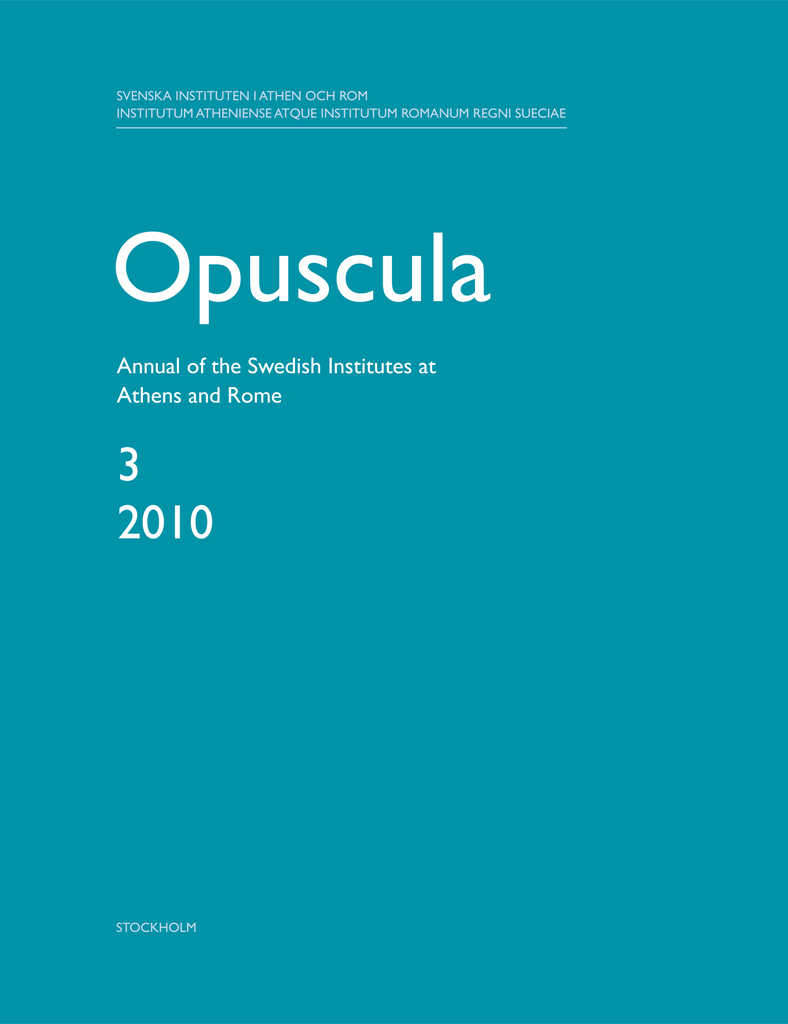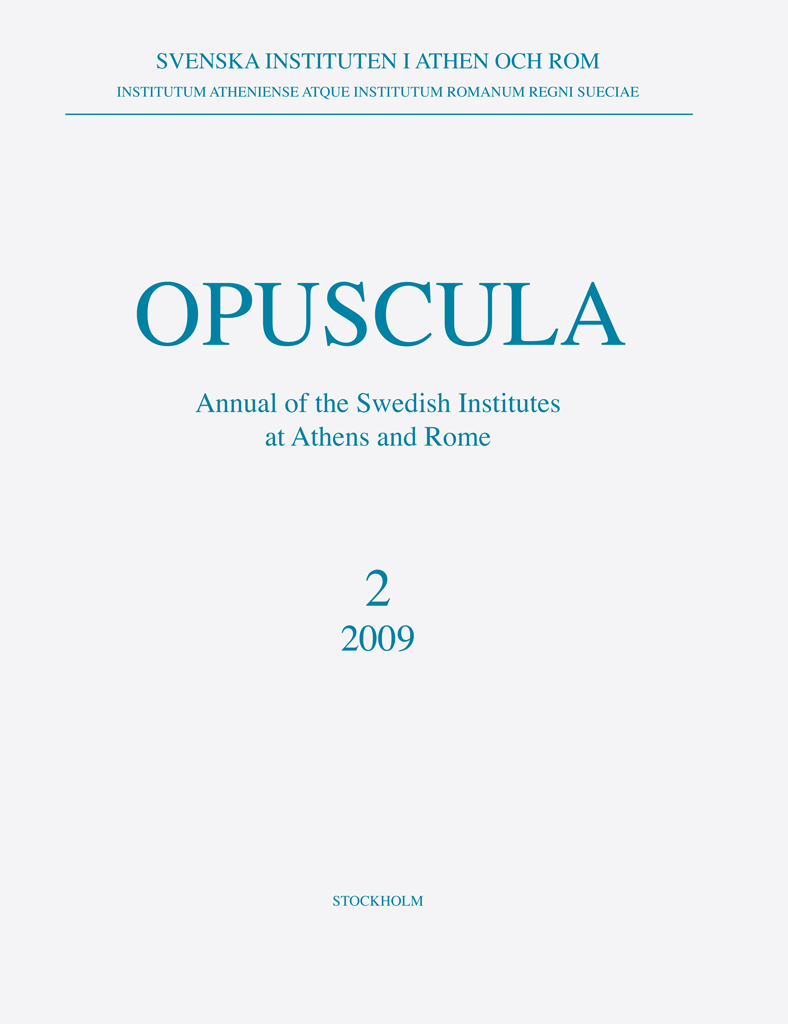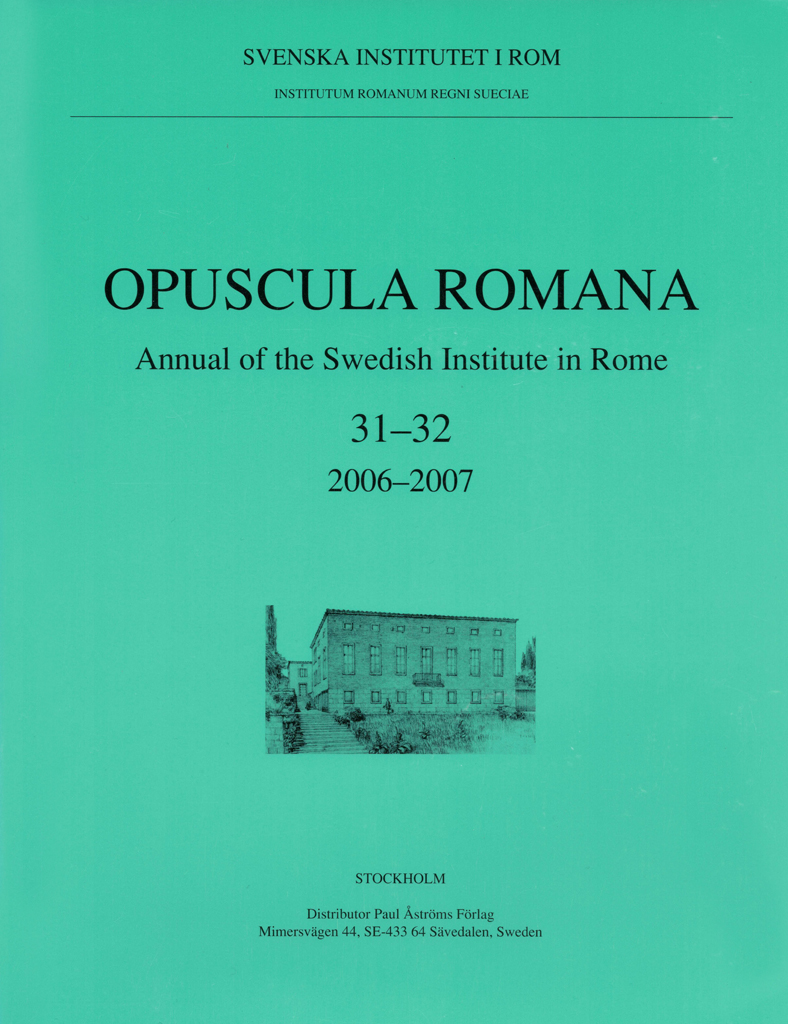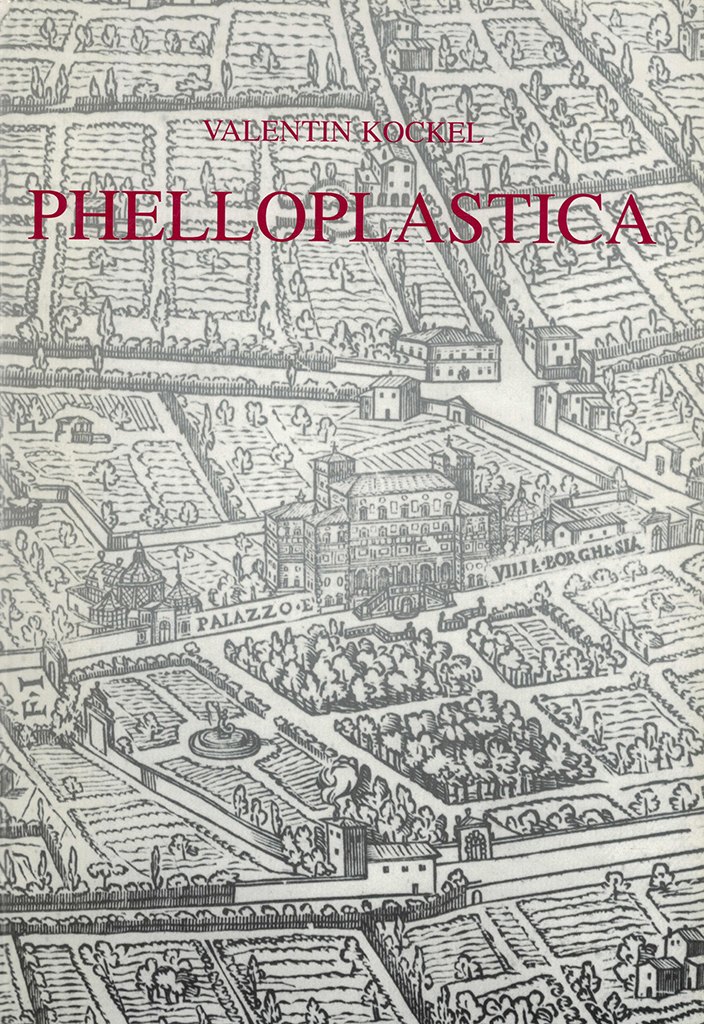Opuscula is published by the Swedish Institutes at Athens and Rome, with the aid of a grant from the Swedish Research Council. Distributed by Eddy.se AB. View journal at ERIH PLUS. Content available with open access. Marsyas in the garden? Small-scale sculptures referring to Marsyas in the forum By Julia Habetzeder Abstract While studying a small-scale sculpture in the collections of the Nationalmuseum in Stockholm, I noticed that it belongs to a previously unrecognized sculpture type. The type depicts a paunchy, bearded satyr who stands with one arm raised. To my knowledge, four replicas exist. By means of stylistic comparison, they can be dated to the late second to early third centuries AD. Due to their scale and rendering they are likely to have been freestanding decorative elements in Roman villas or gardens. The iconography of the satyrs of the type discussed is closely related to that of a group of fountain figures. These fountain figures are believed to refer to a motif well known in Roman times: the Marsyas in the forum. In this article I argue that the satyrs of the type discussed refer as well to this once famous depiction of Marsyas. Bibliographical information Julia Habetzeder, ‘Marsyas…
Opuscula is published by the Swedish Institutes at Athens and Rome, with the aid of a grant from the Swedish Research Council. Distributed by Eddy.se AB. View journal at ERIH PLUS. All content available with open access. Zersägte Köpfe. Die Transformation antiker Porträts zu monumentalen Gemmenbildern im 18. Jahrhundert By Dagmar Grassinger Abstract Im 18. Jahrhundert wurden fragmentiert erhaltene antike Porträtköpfe bisweilen in der Längsachse geteilt und beide Hälften separat als Profilköpfe auf marmorne Hintergründe montiert. Diese Marmorhintergründe hatten häufig die Form ovaler Medaillons mit mehr oder weniger aufwendig profilierten Rahmen. Durch diese Restaurierungspraxis entstand mit solchen Porträtmedaillons eine Reliefgattung, die uns in dieser Form aus der Antike selbst so gut wie gar nicht überliefert ist, die aber im 18. Jahrhundert offenbar einen Nerv der Zeit getroffen hat. Die Porträtmedaillons mit ihren leicht erhabenen Profilköpfen können als monumentalisierte Gemmenabdrücke in Stein verstanden werden. Angeregt wurden sie wohl durch zahlreiche zeitgenössische Gemmenpublikationen in opulenten Stichwerken und den durch diese generierten „Gemmenblick“ der Betrachter. So geben diese zu monumentalen Gemmenabdrücken transformierten Porträthälften Aufschluss zu Wahrnehmungs- und Sehgewohnheiten ihrer Entstehungszeit. Sie sind Teil eines ästhetischen Zeitphänomens, das antike Denkmäler durch den Umriss ihrer Formen definiert. This contribution is only available in print. Bibliographical…
Published by the Swedish Institute of Classical Studies in Rome. Distributed by Eddy.se AB. Opuscula Romana. Annual of the Swedish Institute in Rome 31–32, 2006–2007 Contents Johnny R. Bengtsson | Late Bronze Age handles from the Apennine settlement at Luni sul Mignone: Some chronological observations Ingela M.B. Wiman & Yvonne Backe-Forsberg | Surfacing deities in later Etruscan art and the sacellum at San Giovenale Allan Klynne | The Villa Selvasecca revisited John W. Hayes | Villa Selvasecca: the pottery finds Ebba Engström & Ragnar Hedlund | Villa Selvasecca: the coins Dominic Ingemark | Villa Selvasecca: the glass Anne-Marie Leander Touati | Interim report of the Swedish Pompeii Project: Work 2000–2004/5 in Insula V 1. Introduction Margareta Staub Gierow | The House of the Greek Epigrams V 1,18.11–12: preliminary report 2000–2004 Arja Karivieri & Renée Forsell | The House of Caecilius Iucundus, V 1,22–27: a preliminary report Henrik Boman & Monica Nilsson | The commercial establishments V 1,13; V 1, 14–16; V 1,20–21: preliminary report 2001–2004 Mark Robinson | Evidence for garden cultivation and the use of bedding-out plants in the peristyle garden of the House of the Greek Epigrams (V 1, 18i) at Pompeii Henrik Boman & Monica Nilsson |…
Published by the Swedish Institute of Classical Studies in Rome. Distributed by Astrom Editions. Opuscula Romana. Annual of the Swedish Institute in Rome 30, 2005 Contents Anne-Marie Leander Touati | The Piranesi marbles from Rome to Stockholm. An introduction to research in progress (pp. 7–29) Raffaela Bosso | Osservazioni sull’attività della bottega Piranesi tra Giovanni Battista e Frencesco: il caso esemplare del gruppo di candelabri con trampolieri (pp. 31–62) Dietrich Boschung & Glenys Davies | Arae Passieniorum (pp. 63–72) G.F. Guidi, C. Giardino & G. Trojsi | L’insediamento etrusco di San Giovenale (Blera, Vitterbo). Caratterizzazione chimico-fisica dei residui delle attività produttive (pp. 73–84) Kristina Jonsson | Intra mural graves in Rome. Social dimensions in early medieval burial practices (pp. 85–95) Monica Nilsson & Mark Robinson | Remains of prehistoric habitation beneath Pompeii V 1,13 (pp. 97–103) Bengt E. Thomasson | Laterculi praesidium. Addendorum series quarta (pp. 105–122) Book reviews Örjan Wikander | L. Ambrosini, Thymiateria etruschi in bronzo di età tardo classica, alto e medio ellenistica (pp. 123–131) Izabella Donkow | B. Burell, Neokoroi: Greek cities and Roman emperors (pp. 132–133) Bibliographical information Opuscula Romana. Annual of the Swedish Institute in Rome 30, Stockholm 2006. ISSN 0471-7309. ISBN 91-7042-173-0. Softcover,…
Published by the Swedish Institute of Classical Studies in Rome. Distributed by Astrom Editions. Ancient sculptures in the Royal Museum Vol. 1. The eighteenth-century collection in Stockholm By Anne-Marie Leander Touati, with contributions by Magnus Olausson This is a presentation of the ancient sculptures acquired in the 17th and 18th centuries by Swedish royalty and subsequently arranged into a public museum in 1794. The work is based both on the testimony of written sources and on the examination of the pieces. The documents related to Gustav III’s acquisitions (c. 200 pieces) in Rome between 1784 and 1789 are particularly rich. They yield ample information both on the Roman antiquities market and on the Enlightened, antiquarian tradition in Sweden. The changing attitudes towards the collection from the late 18th century up to the present date are touched upon. The terminology used to describe Roman sculpture is discussed and the 18th-century techniques are surveyed. Finally a catalogue which includes discussion of the 15 main pieces of the collection follows. Contents List of abbreviations Preface Acknowledgements Introduction Part 1. Background 1. The history of collecting 2. The main sources for the collection 3. The collector: Gustav III and his entourage (by Magnus Olausson)…
Published by the Swedish Institute of Classical Studies in Rome. Distributed by Astrom Editions. Phelloplastica. Modelli in sughero dell’architettura antica nel XVIII secolo nella collezione di Gustavo III di Svezia By Valentin Kockel, with a contribution by Magnus Olausson Abstract This volume treats the art of making cork models of ancient architecture in the work of Giovanni Altieri, one of the best-known modellers of the 18th century. It was from him that the Swedish king Gustavus III bought all his models. A popular method of reproducing the ruins of Rome three-dimensionally, and of introducing them into central and northern Europe, was cork models. These may be compared to plaster casts or small-scale copies of ancient sculpture. Because of its porosity, cork proved optically ideal for the portrayal of ancient ruins, and it could also be easily transported, as it was so light. The craftsmanship follows the tradition of the Nativity artisans of Naples. Travellers to Italy valued the cork models as representations of widely admired Roman architecture and could also transfer to them their fascination for the ruins, which were seen as symbols of transience. Nos. 1–5 of the catalogue depict buildings from Rome and Tivoli that also constituted the…
Published by the Swedish Institute of Classical Studies in Rome. Distributed by Astrom Editions. A survey of Greek and Latin inscriptions on stone in Swedish collections Edited by Bengt E. Thomasson in collaboration with Monica Pavese Abstract A presentation, with text and short commentary, of 202 Greek and Latin inscriptions on stone kept in collections in Göteborg (the Department of Classics and Röhsska Konstslöjdsmuseet), Uppsala (the Collection of Classical Antiquities), Stockholm (the Museum of Mediterranean and Near Eastern Antquities, the National Museum, the Gustav III:s antikmuseum, Millesgården and a private collection) and Umeå (the University of Umeå), as well as Rome (Istituto Svedese) and Anacapri (Villa San Michele di Axel Munthe). Contents Preface (p. 7) Introduction (pp. 9–10) Bibliographical abbreviations (p. 11) Inscriptions at the Swedish Institute in Rome (p. 13) La collezione epigrafica di Villa San Michele di Monica Pavese (pp. 15–75) The collection in Göteborg (pp. 77–83) The collection in Uppsala (pp. 84–94) The collection in Stockholm (pp. 95–120) Indices (pp. 121–127) Concordantiae (pp. 128–129) Bibliographical information Bengt E. Thomasson & Monica Pavese, eds, A survey of Greek and Latin inscriptions on stone in Swedish collections (Skrifter utgivna av Svenska institutet i Rom, 8°, 22), Stockholm 1997. ISSN…







